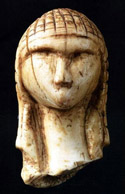Anthropology, Department of

Department of Anthropology: Faculty Publications
Airborne LiDAR acquisition, post-processing and accuracy-checking for a 3D WebGIS of Copan, Honduras
Document Type
Article
Date of this Version
2-2016
Citation
von Schwerin, J., H. Richards-Rissetto, F. Remondino, M. Grazia Spera, M. Auer, N. Billen, L. Loos, L. Stelson, M. Reindel. 2016. Airborne LiDAR acquisition, post-processing and accuracy-checking for a 3D WebGIS of Copan, Honduras. Journal of Archaeological Science: Reports. Volume 5. February 2016. Pages 85-104. http://dx.doi.org/10.1016/j.jasrep.2015.11.005
Abstract
Archaeological projects increasingly collect airborne LiDAR data to use as a remote sensing tool for survey and analysis. Publication possibilities for LiDAR datasets, however, are limited due to the large size and often proprietary nature of the data. Fortunately, web-based, geographic information systems (WebGIS) that can securely manage temporal and spatial data hold great promise as virtual research environments for working with and publishing LiDAR data. To test this and to obtain new data for archaeological research, in 2013, the MayaArch3D Project (www.mayaarch3d.org) collected LiDAR data for the archaeological site of Copan, Honduras. Results include: 1) more accurate archaeological maps, 2) identification of unrecorded archaeological features, 3) an assessment of combining LiDAR and ground-checking to increase data accuracy in ecologically and topographically diverse landscapes, and 4) newLiDAR datasets that are hosted in a 3DWebGIS and integrated with other archaeological data to enhance data accessibility and collaborative research.
Included in
Archaeological Anthropology Commons, Computer and Systems Architecture Commons, Digital Humanities Commons, Geographic Information Sciences Commons, Landscape Architecture Commons, Latin American Languages and Societies Commons, Other History of Art, Architecture, and Archaeology Commons, Remote Sensing Commons, Spatial Science Commons, Urban Studies and Planning Commons


Comments
Copyright © 2015 Elsevier Ltd. Used by permission.